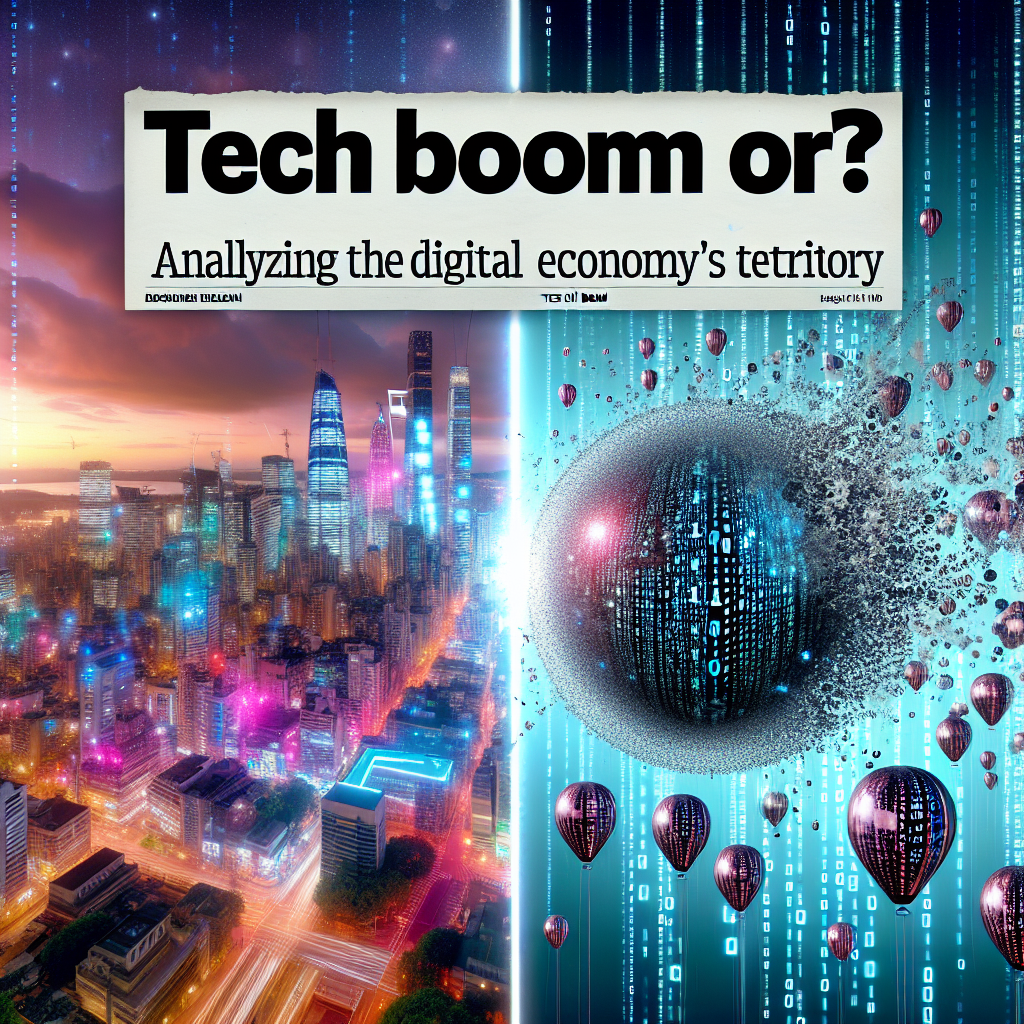Tech Boom or Bubble? Analyzing the Digital Economy’s Trajectory
The digital economy is undeniably one of the most dynamic sectors in modern history, fundamentally reshaping how societies operate, businesses function, and individuals interact. It is an engine of innovation, spawning technologies and platforms that have, among other things, changed how we shop, communicate, and work. However, as the sector continues to evolve at an unprecedented pace, it raises an increasingly pertinent question: Are we witnessing a sustainable tech boom, or are we heading towards an inevitable bubble burst?
The Roots of the Digital Revolution
To understand where the digital economy might be headed, one must first understand its foundations. The roots of today’s digital economy can be traced back to the late 20th century, with the advent of personal computing and the internet. These technologies laid the groundwork for what would become a rapid expansion in digital capabilities, from cloud computing and artificial intelligence to the Internet of Things (IoT) and blockchain.
Recent data shows that global digital transformation investments are expected to reach $2.8 trillion by 2025, underscoring the sector’s explosive growth. These investments span a wide range of industries, from finance to healthcare, each harnessing digital technology to drive efficiency and develop innovative solutions.
Indicators of a Tech Boom
Several key indicators suggest that we are indeed in the midst of a tech boom:
-
Innovation and Advancements: Technological advancements are occurring at a breakneck pace. Quantum computing, 5G networks, and advances in machine learning are pushing the boundaries of what is possible, promising to unlock new capabilities and efficiencies across sectors.
-
Investment Surges: Venture capital flows into tech startups continue to reach new highs. In 2022 alone, global venture capital investment in tech surpassed $621 billion, buoyed by startups developing cutting-edge technologies.
- Increased Digital Adoption: The COVID-19 pandemic accelerated digital adoption across the globe. Remote work, online shopping, and digital payments became ubiquitous, driving demand for digital solutions and infrastructure.
Signals of a Potential Bubble
Yet, alongside indicators of boom, there are signs that hint at a potential bubble:
-
Skyrocketing Valuations: Some technology companies, particularly startups, have reached valuations that far outpace their revenue or profit generation capabilities. This has led to concerns that some assets are overvalued, reminiscent of the dot-com bubble of the early 2000s.
-
Speculative Investments: The rise of cryptocurrencies and non-fungible tokens (NFTs) has showcased speculative investment behavior reminiscent of past bubbles. While these assets represent intriguing technologies, their market volatility and speculative nature raise red flags.
- Market Corrections: Technology stock market indices have experienced significant volatility, with major corrections sparking fears of a broader downturn. Such volatility suggests caution, as markets adjust to better reflect intrinsic company values.
Balancing Boom and Bubble
The reality of the digital economy likely lies somewhere between a sustained boom and a precarious bubble. The sector’s transformative potential is undeniable, with new technologies and business models continuing to emerge. However, the challenge lies in managing growth sustainably, avoiding hyper-inflated valuations, and fostering long-term value over short-term speculation.
Regulatory frameworks will play a crucial role in ensuring the sector develops healthily. Policymakers worldwide are grappling with how to regulate emerging technologies in a way that protects consumers without stifling innovation.
Conclusion
The trajectory of the digital economy hinges on multiple complex factors. While there is reason to be optimistic about sustained technological advancement, the risks of speculative excess cannot be ignored. Stakeholders—including investors, regulators, and businesses—must approach the evolving landscape with both enthusiasm and caution. By navigating the fine line between boom and bubble, the digital economy can continue to thrive, driving innovation and prosperity in the decades to come.

